Tips on Writing a Letter to Your Legislator or Government Official
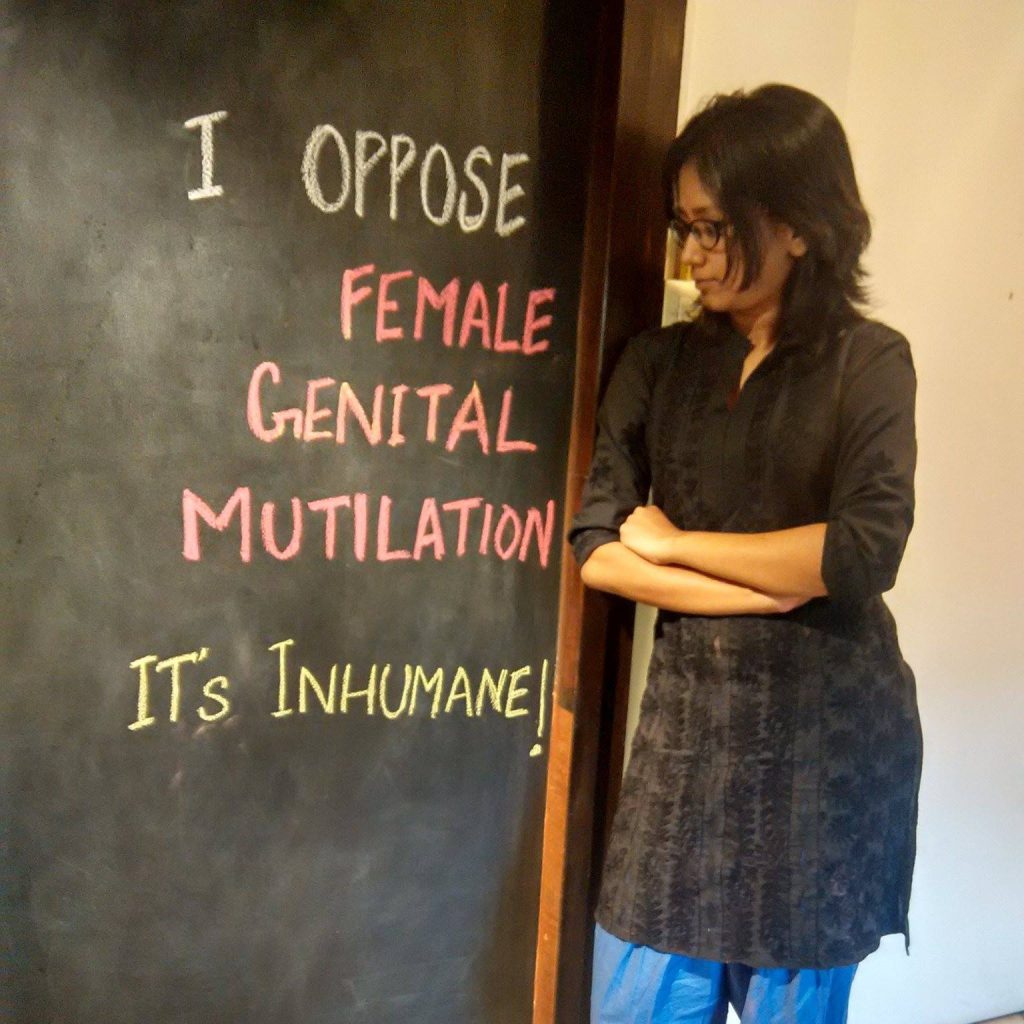
Sahiyo has been seeing an increase in the number of individuals sending letters to their legislators or government officials regarding their concern that FGC or khatna is occurring in their community. These letters, written by Bohra women anonymously or with their name, have been circulating the social media streams, particularly on Whatsapp. Sahiyo would like to applaud these women for their brave efforts of informing and asking for help from the legal and political entities within their communities. Legislators highly value letters and emails from their constituents. Letters are a great way to express your personal connection to an issue while conveying your opinion. To others out there who might be considering doing something similar, Sahiyo would like to provide some useful tips on how to write an impactful letter to a legislator or government official. Tips: The Letter should be addressed to a specific individual State your name, profession, and how you are connected to the legislator (for instance, do you reside in their district?) State the aim or objective of the letter (for instance, are you opposing a bill?) Include a personal story showing your connection to the issue and how it might affect you, your family, and your community Include any statistics from reputable sources on the topic in the letter Make a particular request – what are you hoping your legislator will do? (for example, do you want them to vote yes or no on a bill?) Thank your legislator or government official Include your contact information – both your name and address on your letter and envelope Keep your letter to one page Use a reasoned and respectful tone in the letter Below are some link to sample letters: LRAC: Sample Letter you can use to write your legislator United States: Writing to your legislator United States: The AHA Foundation United States, California: How to Lobby the California State Legislature How to Address a Letter to a Government Official Youth Central: Write a Letter to a Politician Amnesty International: Letter Writing Tips If you have further questions or would like support in drafting your letters, please do e-mail us at info@sahiyo.com.
Respected Syedna, we are all disappointed by your views on female circumcision
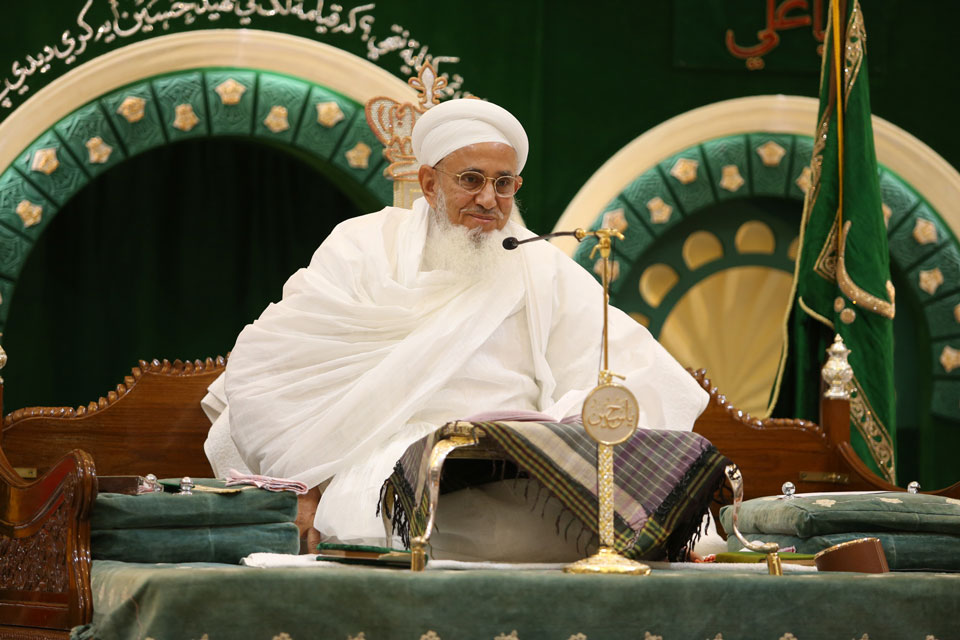
Syedna Mufaddal Saifuddin’s recent wa’az (sermon) in Mumbai has come as a disappointment. For almost three months now, Dawoodi Bohras who wish to see an end to female circumcision (khatna) had been hopeful. Starting with Sydney in February, many Bohra jamaats in different cities around the world have issued letters to their members, asking them to stop practicing khatna because it is against the law in those countries. (Read more about the jamaat letters here.) The jamaats issuing these letters – be it in Australia, USA, UK or Sweden – are all trusts that function with the sanction of the central Bohra leadership, whose headquarters are at Badri Mahal in Mumbai. The jamaat letters gave hope to Bohras across the world, even in countries like India and Pakistan where there are no laws against female genital cutting, that the Bohra leadership would eventually ask the whole community to stop practicing khatna. After all, in a community that is so close-knit and centralised, why should girls in some parts of the world be spared from circumcision, while girls in other countries continue to be cut? If Dawoodi Bohras are one community, how can there be different rules based on geography? In this light, the Syedna’s recent public sermon on April 25 has left large sections of Bohras surprised and disheartened. His speech, given at Mumbai’s Saifee Masjid on the occasion of the death anniversary of 51st Syedna Taher Saifuddin, made an indirect but fairly clear reference to khatna. A four-minute audio clip of that section of the sermon has been circulating among Bohra social media groups all week, and several concerned community members wrote to Sahiyo to tell us that they had attended the wa’az and were shocked by the Syedna’s statements. On April 29, The Times of India wrote a report about these statements, which can be read here. In the sermon, delivered in the Lisan-ul-Dawat language, Syedna Mufaddal Saifuddin can be heard saying the following: [blockquote]“Whatever the world says, we should be strong and firm…whatever they say, it does not make a difference to us, we are not willing to accept [what they say]…we are not willing to talk to them. What are they telling us? That what we are doing is wrong?…who are they to teach us?”[/blockquote] The Syedna then makes a reference to other vices that people have, such as drugs or cigarettes, asking, “Why don’t they tell those people [that they are wrong]?” A clearer reference to khatna comes with the following words in the speech: [blockquote]“It must be done. If it is a man, it can be done openly and if it is a woman it must be discreet. But the act must be done. Do you understand what I am saying? Let people say what they want…but Rasoolullah [Prophet Mohammed] has said it…Rasoolullah will never say anything against humanity. He has only spoken [of] what is beneficial…from the perspective [“haisiyat”] of the body and the soul. What do they say?…that this is harmful? Let them say it, we are not scared of anyone.”[/blockquote] The Syedna’s sermon is significant for many reasons. This is the first time that he has made such a clear reference to khatna in public without explicitly spelling it out. All through the recent Australia case hearings as well as the anti-khatna campaigns by Sahiyo, Speak Out on FGM and other Bohras, the community was eagerly awaiting a word on the subject directly from the Syedna. But his declaration that Bohras must continue the act, irrespective of opposition from various quarters, indicates that Bohra authorities were not being sincere when they issued various jamaat letters around the world. The implication of his speech is that the jamaat letters asking people to stop khatna are insignificant – a mere formality to save Bohras from facing criminal consequences in countries where female genital cutting is illegal. Were the jamaat letters a mere pretence to hoodwink international governments? His speech says “the act” must be done openly for men and discretely for women. Why? The Syedna says that the “the act” must be practiced because the Prophet recommended as something beneficial. But according to the jamaat letters issued with the sanction of the Syedna, the Prophet also preached the value of “hibbul watan minal imam” – love and loyalty for the laws of one’s country. So which teachings of the Prophet must Bohras in those countries follow? Most significantly, we would like to point out one thing: the Syedna’s speech dismisses and rejects all opposition from “them”, from all those saying that khatna is harmful and must not be practiced. The “they” he is referring to, however, are not just governments of countries like Australia or the USA. The strongest form of opposition to khatna is now coming from within the community – from Bohra women who have either undergone khatna or have seen their loved ones go through it, and from Bohra men who are horrified that their daughters, sisters, mothers and friends have to go through the cut. These are Bohras of all hues – staunch believers, regular masjid attendees, occasional attendees, sceptics, liberals, traditionalists, reformists – but they are Bohras, and they no longer want the practice of khatna to continue. By alienating these women and men as “they”, as outsiders, the opposition cannot be wished away.Those opposed to the practice have strong reasons for their views, and we urge the Syedna and all Bohras to engage in meaningful debates and discussions on the issue, rather than trying to shut out opposition. Lastly, the Times of India report quotes a source close to the Bohra authorities, claiming that this speech was not about khatna and has been misinterpreted. However, hundreds of Bohras have interpreted his speech as a reference to khatna and circulated the audio clip widely. If the leadership believes that all of these people misinterpreted the speech, we urge the Syedna to publicly clarify this, and make his stance on khatna clear.
Notices by Sydney, Melbourne and London’s Anjuman-e-Burhani Trusts on ‘Khafd’ (Khatna) or Female Genital Cutting
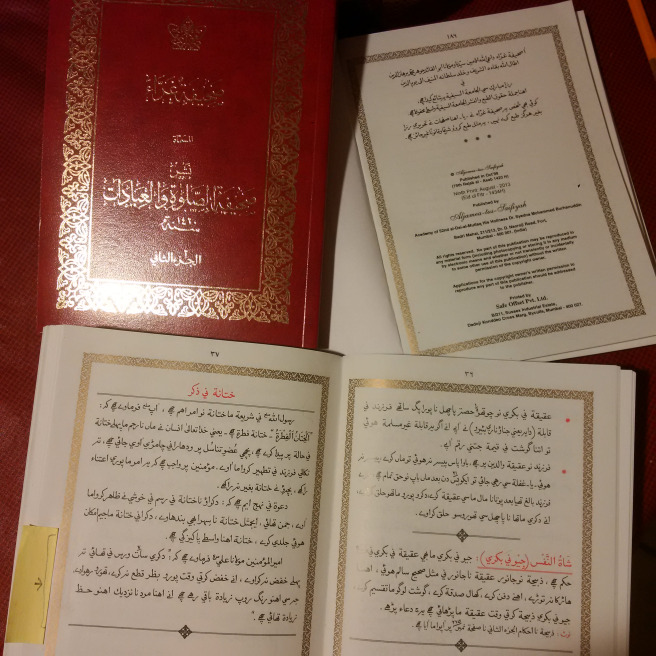
On 8th February, 2016, the Anjuman-e-Burhani Trust of Sydney held a meeting and on 9th February, a notice was released to all members of the Dawoodi Bohra community in their jurisdiction to honour the laws of the land in which they reside and, accordingly, instructed them to refrain from carrying out the practice of ‘khafd’ or ‘khatna’ (also known as female genital cutting) on their daughters. In their statement, the Sydney jamaat quoted the Prophet Mohammed Rasulullah (SAW) to ask the community members to respect the laws of their respective countries, like they would their religion, in the lines below: “Hubbul watan minal imaan”, which means “love of the land of abode is part of faith.” The Sydney jamaat also informed the community that ‘khafd’ or ‘khatna’ is classified as Female Genital Mutilation (FGM) under section 45 of the Crimes Act of NSW and that the practice would ‘…be interpreted to fall within the specific laws in relation to FGM in other states or territories of the Commonwealth of Australia.’ Clearly stating that ‘khafd’ is illegal, irrespective of the place where where it is carried out, Australia or overseas, community members are advised in the strictest terms to not engage in this illegal act. (Letter can be accessed on the Sydney jamaat website: http://www.sydneyjamaat.com/site/login) This was followed by another notice on 10th February by Melbourne’s Anjuman-e-Burhani Trust, which was along the same lines as Sydney. Letter to Melbourne jamaat by the Anjuman-e-Saifee (Melbourne) On 13th February, the London Anjuman-e-Burhani Trust held an ‘extraordinary’ meeting, whereby they passed a resolution instructing all community members to follow in the footsteps of their Australian brothers and sisters and abstain from the act of ‘khafd’. In line with Australia, they quoted the 53rd Dai al-Mutlaq, HH Dr Syedna Muffadal Saifuddin (TUS), who used the Prophet’s words to drive the message home, and emphasized on the seriousness of the crime of performing FGM on a minor which has resulted in the conviction of three (3) members of Dawoodi Bohra community in Australia by the Supreme Court of New South Wales. In their statement to community members, they have highlighted the new guidelines on Safeguarding Children from female genital mutilation (October 2015) and said in no uncertain terms that ‘khafd’ is against England, Wales and Northern Ireland’s Prohibition of Female Genital Mutilation Act of 2003 and Scotland’s Prohibition of Female Genital Mutilation Act of 2005. **Also, on the website of the Home Office and the Department of Education, UK government, there are guidelines on Mandatory reporting of female genital mutilation: procedural information (October 2015), which, unfortunately, has not been mentioned in the statement released by London’s Anjuman-e-Burhani. A welcome step and wise decision, indeed, by our community leaders from Sydney, Melbourne and London. However, it is surprising to note, like Dilshad Tavawalla did in her blog on 17th February that “All men in the forum were present to reflect, interact and deliberate about the very personal, private, delicate, sensitive, traumatic and grave issue of “Khafz” (Khafd) or Female Genital Mutilation (FGM) impacting the lives, physical and psychological integrity, and general well-being of thousands of Dawoodi Bohra girl children and women.” And, she asks a most pertinent question that is on all our minds: “Why no women?” In addition, all these statements come as a shock due to the contradictory nature of the fact that the practice of ‘khafd’ finds mention in the Dawoodi Bohra community 3-volume publication called ‘Sahifa’ (picture attached of the Ninth Print edition: August 2013) that is published by the Aljamea-Tus-Saifiyah – Academy of the 52nd Dai al-Mutlaq, HH Dr Syedna Mohammed Burhanuddin. In the book, as pointed out by Ms Tavawalla in her blog on 16th February, “the passage enjoins the performance of ‘khafd’ or Female Genital Mutilation on Dawoodi Bohra girls at the age of seven (7) years and the recommended extent and manner for performing it.” Sahifa – Published by ALJAMEA-TUS-SAIFIYAH Academy of 52nd al-DAI-AL-MUTLAQ. These are editions in 9th Print: August 2013 (Eid ul Fitr – 1434H). Three (3) volumes. It is clear that despite these statements counseling against the practice, not all Dawoodi Bohras subscribe to the decision made by the jamaats of Sydney, Melbourne and London. I will direct you to the 17th February blog of a Dawoodi Bohra woman named Rashida Mustafa, who passionately advocates for the practice in the name of tradition. It is truly disturbing to read someone argue in favour of a violent ritual that can leave little girls with terrible and indelible, lifelong scars. Even so, it is obvious from the sacntimonious tenor of Rashida Mustafa’s blog that the letters from any of three jamaats – Sydney, Melbourne and London never reached her attention. As Dilshad Tavawalla says in her blog, Rashida Mustafa must “[…] be afraid – very afraid, […]”. The laws in UK, USA and Canada considers anyone who aids, abets or counsels the carrying out of FGM to be a party to the offence, and hence punishable under those respective countries’ laws (even in countries where the practice is legal, according to the FGM Act, 2003, in the UK). And, last but not least, there remains the big question of eliminating this practice in India – home to the vast majority of Dawoodi Bohras – and where there is no law per se against ‘khafd’.** What can we expect from our learned brethren at the Anjuman-e-Shiate Ali, which administers and conducts all affairs of the Dawoodi Bohra community in Mumbai? Can we hope that a notice in line with the praiseworthy and proactive statements against ‘khafd,’ like those released by the Sydney, Melbourne and London jamaats (all based in countries where there are strong laws banning FGM/C), will follow suit? NB: In a recent article by Anahita Mukherji from the Times of India published on 25th February one can read about the existing laws that can be used against ‘khatna’ in India. Noted lawyers Dilshad Tavawalla and Flavia Agnes were quoted in the article and they pointed out specific sections in the Indian Penal Code and the Protection of Children from Sexual Offences
Today, I Call Myself A SURVIVOR Of FGM

By Zarine Hashim Age: 36 Country: Melbourne, Australia The memory of the fateful day is very clear in my mind. It was a Saturday, and like every Saturday, mom, my older sis and I were headed to our grandparent’s home to spend the day there. I always eagerly awaited the weekend, as we always had so much fun there and got spoilt with yummy snacks, lollies and an occasional movie. This day was different! Upon reaching my grandparent’s home, I noticed my gran was ready to leave for somewhere she had to be. She said to me that she was going to see her friends and I could come along. I was quite excited about the outing. Little did I realize that this would be a trip I would want to forget about! We walked into the bohra mohalla in Pune and went up a flight of stairs of a very dingy looking apartment building. We were greeted by a woman at the door who ushered us into the house. On entering the room, I noticed two other women sitting on a carpet laid out. One of the women asked me to take my undies off and lay on the floor. I was very confused and looked at my grandmother who said it was ok and I should do as I was told. So I did and as soon as I laid down, one of the ladies spread my legs and pinned them and the other two pinned my arms above my head. I remember fighting to get free but they were too strong for me. Then I felt this sharp pain and screamed in agony. It was all over quickly, but it felt like a very long time. I was very scared and closed my eyes. The lady then wrapped a gauze like bandage around my private parts, almost like a nappy and I was instructed not to mention this to anyone. The other lady said, ‘You’re going to get a new underwear’, and I remember thinking that I just wanted to go home to my mom. This is how vividly I remember the fateful day, but until I signed a petition to stop this practice four years ago, all this was a suppressed memory, buried away! I’m not sure how it has affected me physically, but it sure has affected me on a mental level. I still shudder every time I talk, think, or read about FGM and tears just roll out. I felt cheated. But today I call myself a survivor and not a victim. I feel empowered by being a part of a group of very strong, brave and driven women and together we are fighting to see an end to this barbaric practice. I have a two year old daughter and I am very blessed to have her in my life and as a symbolic representation of my endurance and perseverance.
I Will Not Be Silent – Ban Khatna Globally
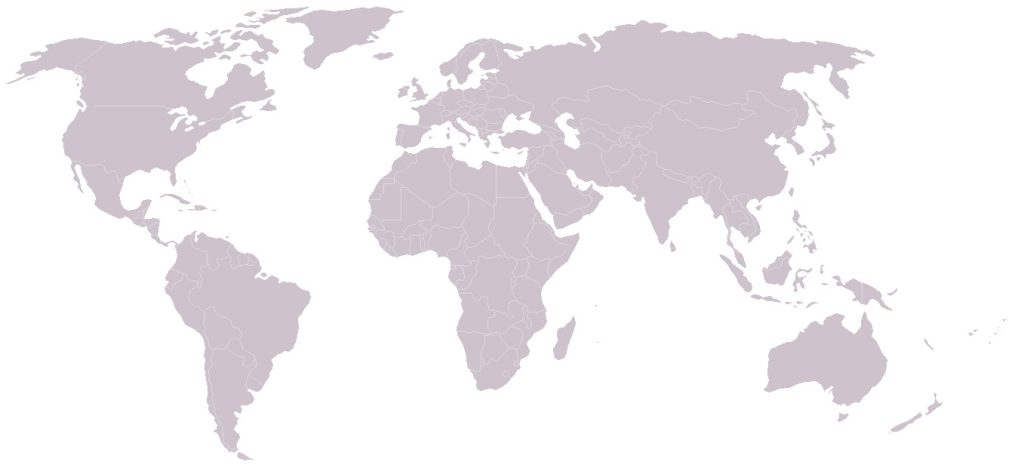
Zehra Patwa Age: 45 Current Country of Residence: United States In 2014, I saw a video that changed my life. My husband sat me down, told me that this was going to be upsetting and showed me a video. It was a documentary from Australia featuring my cousin’s wife recounting her experience of being cut at the age of 7 in a dingy apartment in India by an old woman. Her telling of the story horrified me, which is the same reaction I have always had about Female Genital Mutilation (FGM) but what threw me was the fact that this was a Bohra woman, like me. She said this happens to all Bohra girls around the age of 7 and that it had happened to her sister, too. For a moment, I refused to believe it but as she kept talking, I realized that it could have been done to me too. I grew up in the UK and moved to the US in 1994. I immediately recalled that summer trip to India at the tender age of 7 to attend my uncle’s wedding. My mother had made me new dresses and I had matching hats and headpieces to go with them. It was going to be so much fun. What I couldn’t recall, though, was the actual khatna, but I have since received confirmation from my family that it was done to me. Even then, the reality did not sink in. How could I not remember it? Maybe it wasn’t done to me after all, maybe it was all a ruse to “save face”. What I’ve learned since is that some women erase the memory of the traumatic event completely and utterly. Sometimes, it can be restored and other times it can’t. I still haven’t accepted if it’s better to know or to not know. Either way, it feels like a violation. I cannot stand by quietly and let other girls in our Bohra community be subjected to this terrible practice. I will not be silent. Even though I do not recall my personal khatna, I feel lasting psychological damage has been done just knowing that it happened to me. I can only imagine the physical and psychological damage done to those girls and women who, to this day, have vivid memories of it. The Bohra jamaats in Sydney and Melbourne in Australia and, now, London in the UK have banned khatna (khafd). Why do our sisters from all over the Bohra diaspora still have to suffer when our sisters in Australia and London are spared? Are Bohra women valued more in some countries than others? All Bohra women are subject to the same rules and edicts from Aqa Maula, why is this any different? Khatna is illegal under Female Genital Mutilation laws in the US (18 U.S. Code § 116 – Female genital mutilation but if khatna should not be done by some Bohras, shouldn’t it be extended to all Bohras regardless of the law in that country? If you had a daughter in Dubai, would you still consider subjecting them to khatna if your sisters in Australia and the UK are specifically told not to?
Mariya Ali – London Bohra Resident – “Last Generation to Lose a Pinch of Our Skin”
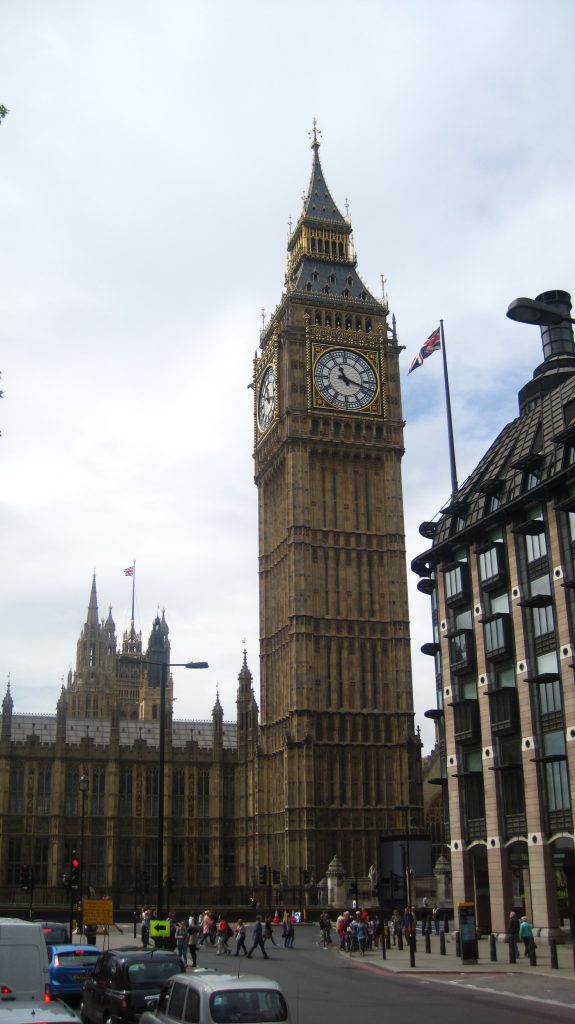
By Mariya Ali I was born and raised in London, England and have been a lifelong member of the London Jamaat. Although FGM has been illegal in the United Kingdom since 1985, myself and many other girls have been subjected to this barbaric ritual, despite it being outlawed. After the Australian court case and subsequent convictions for circumcising two minor girls, the Sydney Jamaat issued a notice urging followers not to circumcise their daughters in Australia or abroad. On February 15th, the London Jamaat followed suit and issued a similar notice. The letter, similar in wording to the one that was issued by the Sydney Jamaat, points out that Islam mandates that its followers be loyal, contributing citizens who abide by the law of the land in which they reside. Despite the UK law explicitly stating that it is illegal to take a UK citizen outside of the UK for the purpose of circumcision, I know of many minors who were circumcised while abroad. It is important to note that this has also been addressed by the letter issued by the London Jamaat. It states that “You must not take your children outside UK for purpose of khafd as that is equally prohibited by law”. The London Jamaat is the first Jamaat after Sydney to publicly discourage followers from performing this procedure on girls. Although this is a huge step in the right direction, the notice that was issued does not condemn the practice itself, but rather it discourages followers from breaking the law. As a woman who has undergone this barbaric ritual, and on behalf of all of the other women who have suffered, do suffer and continue to suffer, I hope that this is the first of many Jamaats to follow suit and finally stamp out this practice. I thank the decision makers of the London Jamaat for taking this step and I sincerely hope that my generation is the last generation to lose a pinch of our skin.
After Australia, Bohras in London asked to stop practicing female circumcision
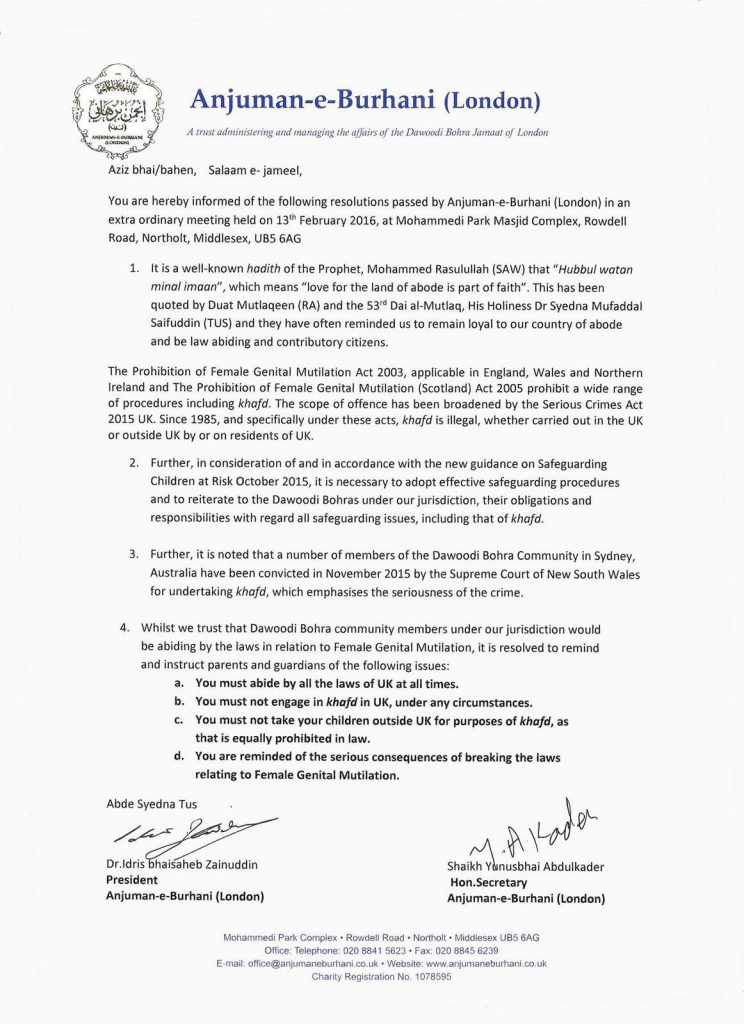
Stop female circumcision, Dawoodi Bohra authorities tell community members in Australia

(Article originally posted in Scroll.in on Feb 11, 2016) By Aarefa Johari Three months after a group of Dawoodi Bohras was held guilty for female genital mutilation in a landmark verdict by an Australian court, community authorities have issued a notice to all Bohras in Australia asking them to obey the law of the land and stop the practice of khatna or female circumcision. The notice has drawn cheers from Bohra activists campaigning to bring an end to the ancient ritual of female genital mutilation that is meant to moderate a woman’s sexual urges. In November 2015, the Supreme Court of New South Wales found a Bohra mother, a retired nurse and a senior clergy member called Shabbir Vaziri guilty of carrying out genital cutting on two minor sisters between 2010 and 2012, when the girls were six and seven years old respectively. The three people could face a maximum penalty of seven years in prison. Hearings to determine the quantum of punishment began on February 5 and are expected to go on for a while. The Bohra ritual of khatna involves snipping off the tip of a young girl’s clitoris, which is defined by the World Health Organisation as Type I FGM. Even though female genital mutilation has been illegal in Australia since 1997, the Bohra case is the first to actually make it to the nation’s courtrooms. It is also the first instance of anyone being arrested for khatna in the Dawoodi Bohra Muslim community, whose members predominantly hail from Gujarat in India. The Bohras are the only community known to practice female genital cutting in India, and so far, many have continued to cut their girls even when they migrate to other countries where female genital mutilation is illegal. The notice issued to Australian community members on February 9, however, could significantly alter this trend. Obey the law of the land The notice, emailed to all Australian Bohras in the form a resolution letter, came a day after the Anjuman-e-Burhani (Sydney) – a trust managing Bohra affairs in Australia – held a meeting to discuss khatna. The letter begins by quoting a hadith (text comprising the teachings of Prophet Mohammed) which states that “love for the land of abode is part of faith”, making it part of Islamic tradition to “remain loyal to the country of abode and to be law abiding and contributory citizens”. The letter goes on to state: [blockquote]“Khafd (also known as khatna or female circumcision) has recently been interpreted by the Supreme Court of NSW to be within the meaning of Female Genital Mutilation (FGM) as defined in section 45 of the Crimes Act of NSW. It is likely that the practice will be interpreted to fall within the specific laws in relation to FGM in other states or territories of the Commonwealth of Australia. Consequently, khafd is illegal, whether it is carried out within any of the states of Australia or overseas. All parents and guardians are hereby directed in the strictest terms not to carry out khafd under any circumstances. You are further instructed not to take any person out of Australia for the purpose of khafd.”[/blockquote] If the community follows the instructions of this notice, it would mean that Bohra girls in Australia will henceforth escape a painful ritual that has been practiced in the community for centuries. It could also mean that Bohra authorities might issue similar notices in other countries where female genital mutilation is illegal, including the US, UK and Canada. No law in India yet The notice has come at a time when a judge presiding over the female genital mutilation case pointed out, during a sentencing hearing on February 5, that the convicted mother and retired nurse have not expressed any remorse about performing genital cutting on the girls. They have not, he said, made any statement indicating that they now reject the practice or would be willing to speak out against it in their community. The notice could also be seen as a reaction to the growing negative media attention to the practice of khatna among Bohras in the past year, as more and more women from the community have come forward to demand an end to the erstwhile secret ritual. In December, 17 Bohra women from around the world (disclosure: this reporter is among them) launched an online petition asking the Indian government to act against female genital cutting, which is not yet illegal in India. The petition has garnered more than 44,000 signatures so far. ‘A small victory’ Community members, particularly those in Australia, have welcomed the notice and are now eager to see the rest of the Bohra population around the world follow suit. Zarine Hashim, a hospital administrator from Melbourne, reacted to the notice with a mix of emotions. “I felt happiness and elation as it was a small victory in the whole scheme of things, but also anger that it has taken a court case to make this happen,” said Hashim. “I really feel that the community, worldwide, needs to take this as an example and reassess the legal, physical and mental health consequences of the practice before performing it.” To read the original article, click here.
The Practice of Khatna or Female Genital Mutilation amongst the Dawoodi (Daudi) Bohra Shia Muslim Community – Part 1
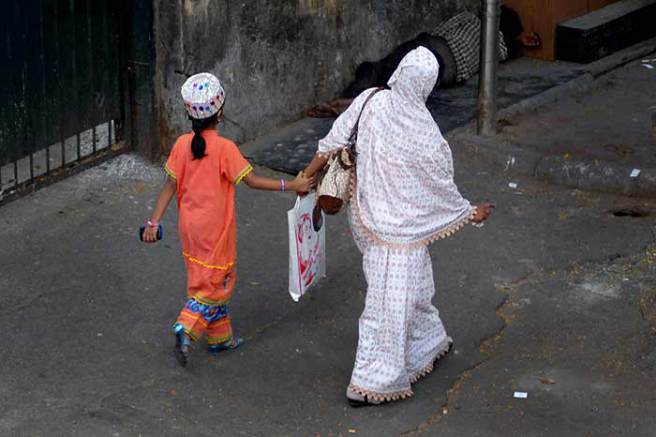
(originally published on Ms. Dilshad Tavawala’s wordpress.com blog on January 17, 2016. Reposted here with permission) By Ms. Dilshad Tavawalla, B.A., LL.M., Barrister, Solicitor, Notary Public – Toronto, Canada Female Genital Mutilation/Cutting (FGM/C) has been an international cause célèbre, and generated remarkable global attention for the past several decades. At international and intergovernmental levels, there is unequivocal consensus that FGM/C represents an extreme violation of the human rights of women and children, a danger to sexual and reproductive health, a harmful practice and a form of gender-based violence, and that it must be abolished. Nations around the world have intensified and expanded their commitment levels to FGM/C; more and more data has been collected, analysed and used; and the UN, its agencies and NGOs around the world have refined and scaled up their efforts on the ground to ban, and eradicate it. In fact, the UNFPA-UNICEF Joint Programme on Female Genital Mutilation/Cutting: Accelerating Change is the largest global initiative to promote abandonment of the practice of FGM/C. However, despite all this worldwide effort to end FGM/C, India in particular, has escaped much of the focus and global attention due to the fact ‘khatna‘ or FGM/C is pervasive and secretly practised amongst the members of the Dawoodi Bohra Shia Muslim community (emphasis mine). The cultural practice of khatna is non-existent, and virtually unknown in various Muslim sects, sub-sects and communities, as well as, other religious denominations found in India, namely, the Hindus, Christians, Parsis, Jains, Buddhists, Sikhs, etc. The Dawoodi Bohra Shia Muslim community, found in large numbers in India and Pakistan, and to a smaller extent, in Bangladesh and Sri Lanka are the only Muslim community in the Indian sub-continent that practises FGM/C. In November 2015, this secretive and clandestine practice known as khatna amongst the uniquely close-knit Dawoodi Bohra Shia Muslim community, attracted worldwide media attention. Three members of the Dawoodi Bohra(DB) community were convicted in Australia’s first ground-breaking prosecution of a FGM/C case where a retired nurse, a mother of the minor girls and a Dawoodi Bohra clergy member illegally participated in carrying out khatna on two minor girls. News of these convictions was reported worldwide in the media including newspapers such as UK’s The Guardian, The Times of India, Hindustan Times, and television news channels in India, Australian and UK. This landmark Australian prosecution of members of the Dawoodi Bohras for illegally practising khatna has prompted several DB women in India to collectively speak out against this dangerous and harmful ritual. Unfortunately, open discussion on FGM/C remains a taboo, even in developed countries due to cultural and religious relativism which has created a reluctance to openly confront and tackle ending FGM/C. I do not wish this post to be seen as a criticism of the Dawoodi Bohra Shia Muslim community to which I belong, but rather a voice seeking to achieve the most fundamental values that underlie all religions, traditions and cultures – “do no harm to others”, which approach, I believe, will promote the wider issues of ending violence against girl children and women, and tackling gender equality in patriarchal societies. The aim of this post is to also offer some cultural insight and understanding of the Dawoodi Bohra Shia Muslim community, to throw light, raise public awareness and capture the underground cultural practice of khatna through the words and lens of Dawoodi Bohra women living around the world. I was born in, and belong to the Dawoodi Bohra Shia Muslim community. I know khatna personally and intimately because it was performed on me at the age of 7 years. The horror, trauma, grief and sadness remain with me till today. Photo credit: Outlook Magazine, Dec 12, 2011
In Australia, three Bohras found guilty for circumcising daughters
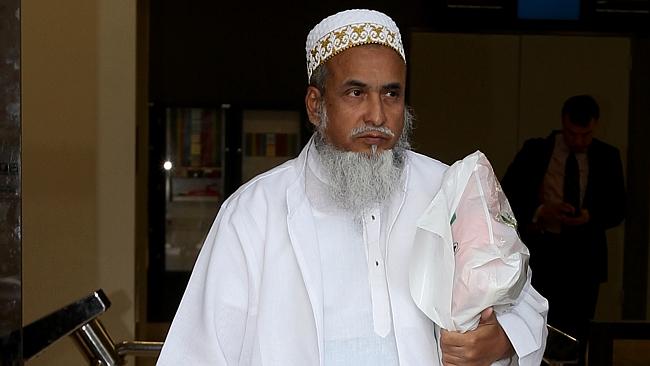
This November, for the first time in the history of the Dawoodi Bohra community, three of its members in Australia were held guilty for carrying out Female Genital Mutilation (FGM) on two minor girls. FGM has been a criminal offence in Australia since 1997, with a maximum punishment of seven years in prison. Australia were held guilty for carrying out Female Genital Mutilation (FGM) on two minor girls. FGM has been a criminal offence in Australia since 1997, with a maximum punishment of seven years in prison. In this much-publicised case, the Supreme Court of New South Wales found Sheikh Shabbir Vaziri, a retired nurse, and the mother of the two girls guilty of performing “khatna” on the sisters in Sydney, somewhere between 2010 and 2012, when the girls were 6 and 7 years old. The police found out about the genital cutting through an anonymoustip-off, and finally arrested the mother, nurse and Sheikh in 2012. The three accused had been out on bail throughout the trial. During the trial, the defence lawyers representing the accused argued that what Bohras practice as “khatna” involves a ritualistic cutting of a thin layer of skin from the clitoris, and does constitute “mutilation”. The Supreme Court’s guilty verdict, pronounced on November 12, 2015, came as an affirmation that even Bohra “khatna” is a form of Female Genital Mutilation, no matter how small the cut. The quantum of punishment in the Australia case will be decided in February. You can read more about this case here.
